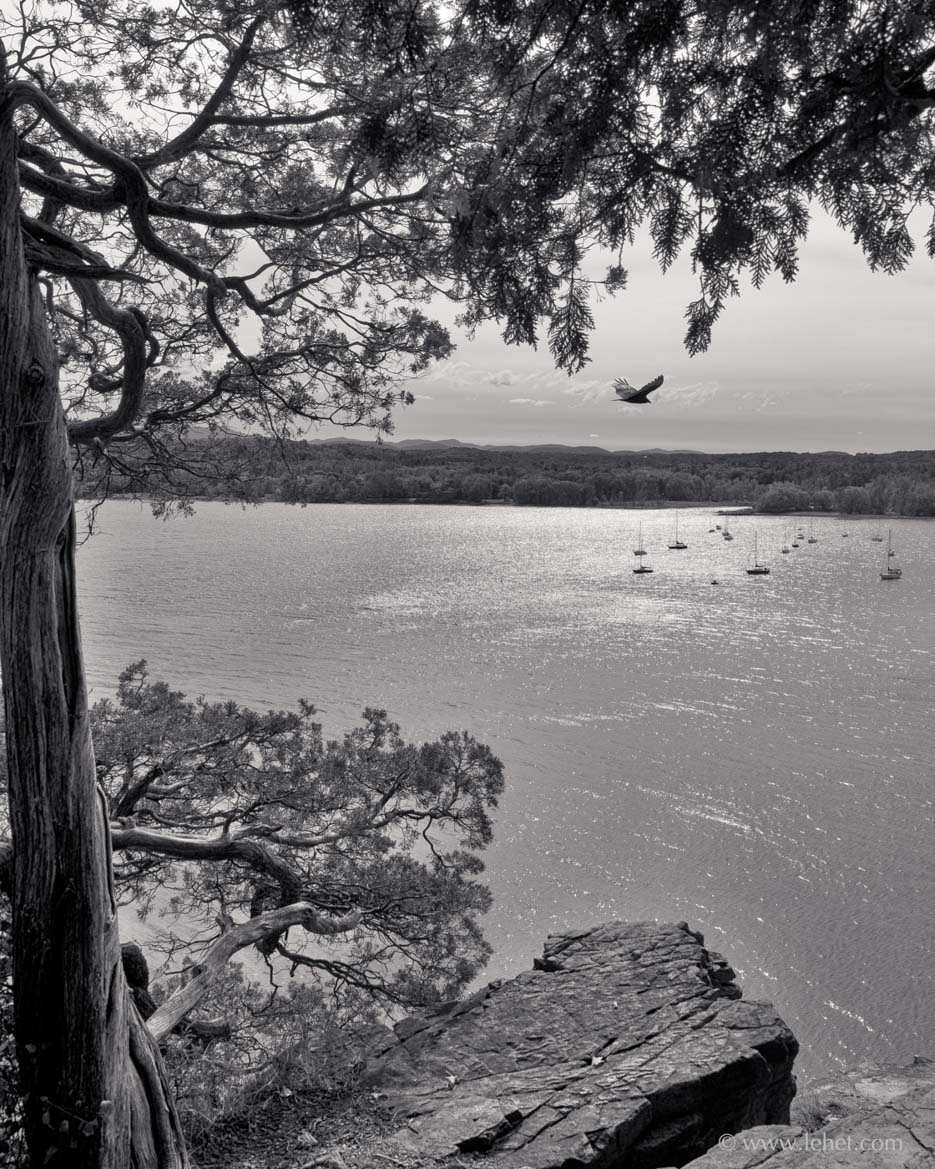Above: Hawk over Lake Champlain
Photography and meditation — and art, aesthetics, and seeing altogether as an intersection with meditation keeps coming up in my thoughts. So one might wonder, “What is the aesthetic of meditation? The vision? What is the substance of meditation in this regard?”
None. No substance. Nothing whatsoever.
It’s interesting that different Buddhist cultures have evolved their own aesthetic within their dharma culture — dharma art — which is almost always beautiful and evocative. The interesting thing is how different that art is from culture to culture, even as the practice itself may not be all that different at its core. It’s not that doing a particular meditation practice leads, nor should it lead, to a specific state of mind that creates a vision.
To offer one contrast, Zen art tends to be quite spare and open, while Tibetan Buddhist art is over-the-top vivid. It is true that vajrayana practice in the Tibetan tradition is based on experiencing vividness through the senses, while Zen practice — from the little I know of it — does not emphasize sensory vividness during sitting practice. Still, generally eyes are open during meditation in both traditions, and a root in the Mahayana gives both Zen and Tibetan practice many similarities in terms of the view.
I won’t go through all Buddhist traditions and compare aesthetics, because that isn’t the point here. The point is that the practice is not creating a solid state of mind or a solid material vision, but rather an empty space, an experience of space, from which possibilities may arise. As photographers, as artists, as practitioners, as humans, we are enriched when we can let experience and phenomenon arise without fixation or aversion, without clinging or aggression — and without the dullness of ignorance.
That approach to experience may in fact influence the art quite a bit.
The title of this page is a quote my teacher likes repeat in regard to Dzogchen practice, as he learned it in his Tibetan lineage. The essence of the experience is nothing at all, but anything may arise — and you can bet something will. This is echoed by meditation instruction from a very different teacher in a different tradition and a country distant from Tibet: Ajahn Chah said something like, “Sit in a chair in the middle of an empty room. See who comes to visit.”
As a photographer I can keep a camera handy to interpret the changing dance of phenomena and light in front of the lens. That is tricky enough. As a human experiencing life in general it is a little trickier, but the same thing, to stay open to whatever arises and let it pass without aggression or clinging, aware that everything changes like the weather and passes through a bigger space like clouds in the sky.

